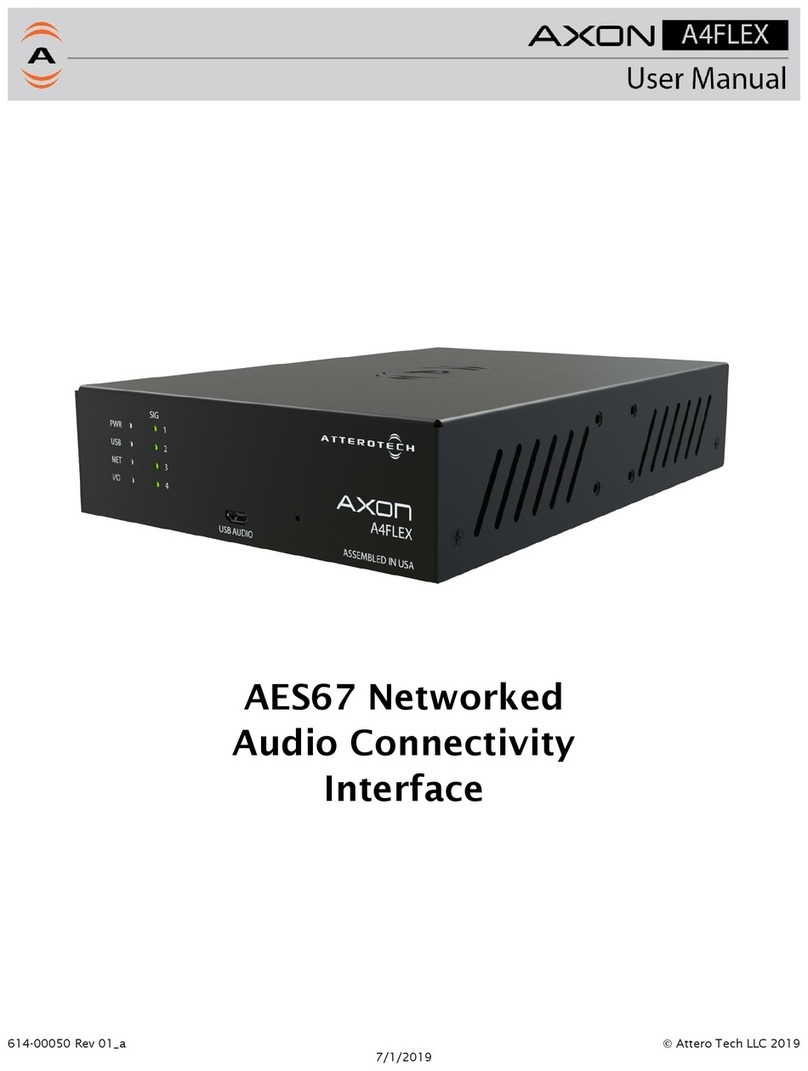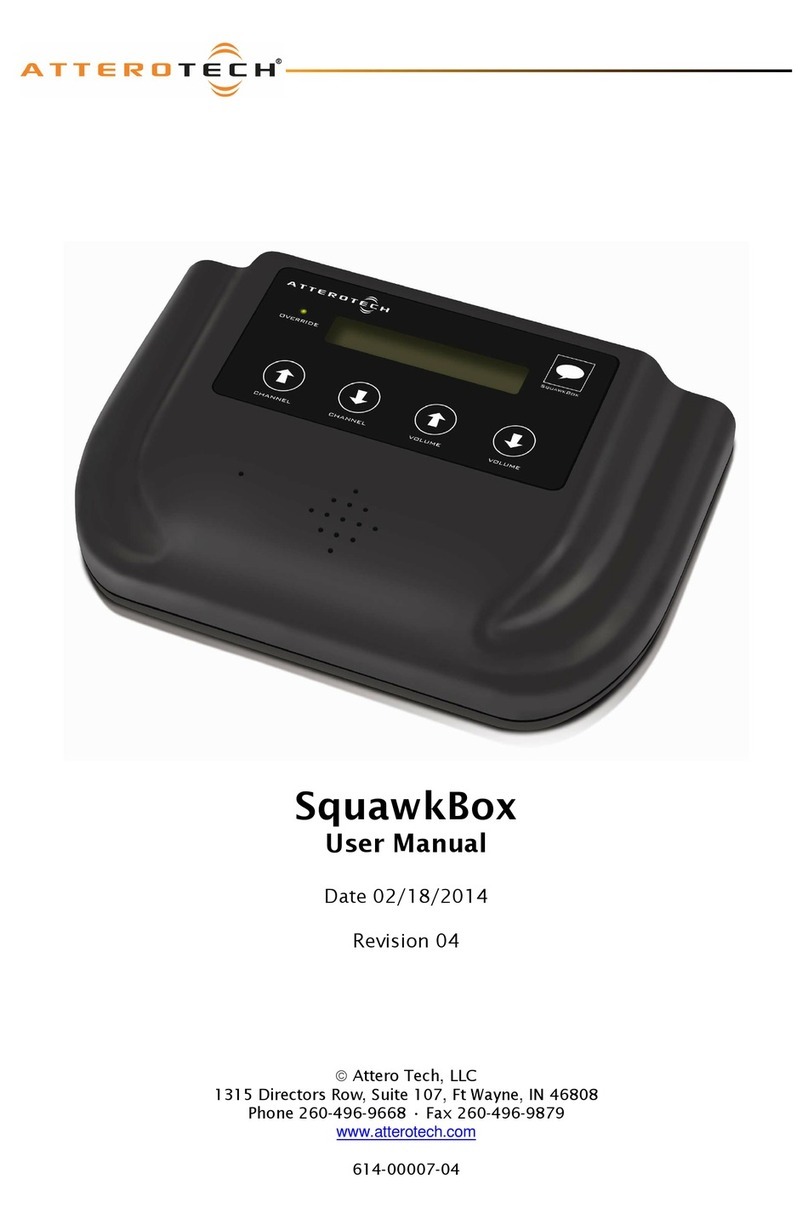
unDAES-O
User Manual
Attero Tech LLC 2015 Page 9 61 -0002 Rev 02
2.3 – Daisy Chaining and ower Linking
A unique feature of the unDAES-O is its support of daisy chaining. This allows an unDAES-O unit to connect to other
Attero Tech devices that supports daisy-chain support and utilize a single home run of Ethernet cabling back to the switch
thus saving on installation costs. Daisy chaining simply requires the unDAES-O be connected to the spare Ethernet port
of the last unDAES-O (or other device supporting Dante daisy-chaining) in the current chain. Not only can the Ethernet
connection be daisy chained, power can also be daisy chained too by connecting the power link output on the powered
device to the power link input on the next device in the chain. This works even if the initial device in the chain is powered
by PoE!
Due to the use of an internal Gigabit Ethernet switch, the number of supported switch hops/daisy-chained devices is quite
high. The actual number of supported switch hops depends on the expected latency settings that are intended for the
devices on the network. Practically speaking, ten daisy-chained unDAES-O devices or less will support the minimum
latency settings that can be applied to the unDAES-0. Beyond that, the number of switch hops may cause audio problems
due to excessive latency and increased clock jitter. The other limitation is the power supply if power is also being daisy
chained from device to device.
oPoE -If power is supplied to the first device via PoE, the daisy chain limit is restricted to the initial device plus
three (3) others (trying to do more will cause the POE to over current at the power sourcing equipment).
oLocal DC – If power is supplied to the first device via a local DC supply, the supply's maximum power output
determines the number of devices it can support (assume 3W @ 2 V DC per device).
To daisy chain an unDAES-O to another unDAES-O device, connect an Ethernet cable from the data only port of the unDAES-
O to the Ethernet port of the unDAES-O to supply the network information. To chain the power, connect the “PWR LINK
OUT” connector of the unDAES-O to the "PWR LINK IN” connector on the daisy-chained unDAES-O.
Additionally, if there are a significant number multicast audio flows configured on the Dante network, it is recommended
that the core network switches that interface to the daisy-chained network segments be configured with the appropriate
IGMP settings to shield the daisy-chain from unnecessary multicast audio traffic. The example shown in Figure
highlights how an IGMP enabled switch can eliminate unnecessary multicast audio traffic from the unDAES-O daisy chain
segment. The red connections show devices that are configured for multicast audio flows and the green are unicast flows
and each show the network segments that are traversed by the associated audio traffic.
Figure 4 - Network Configuration Example



































